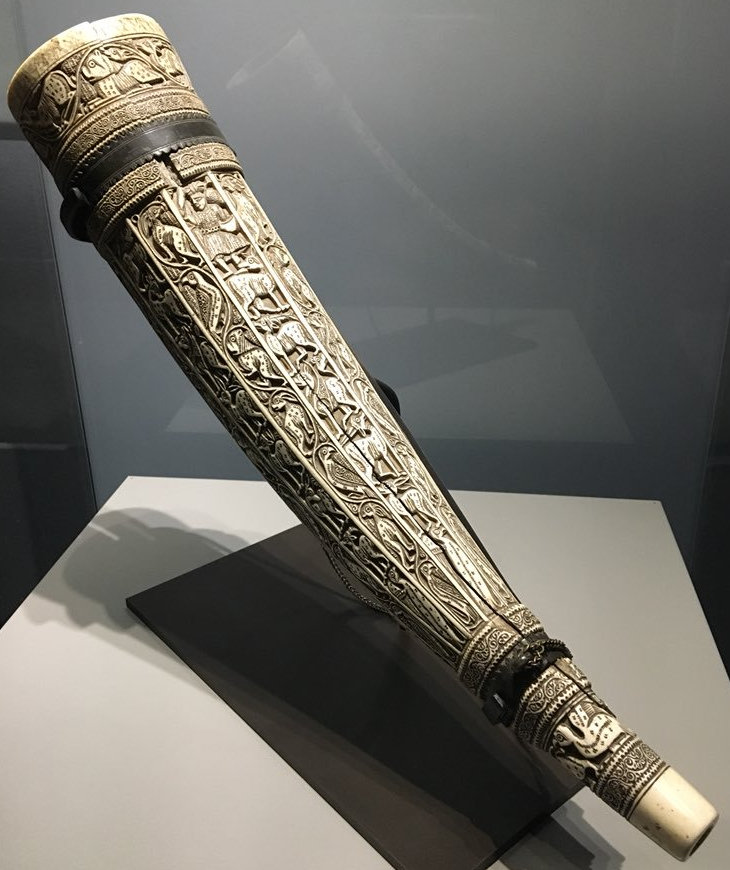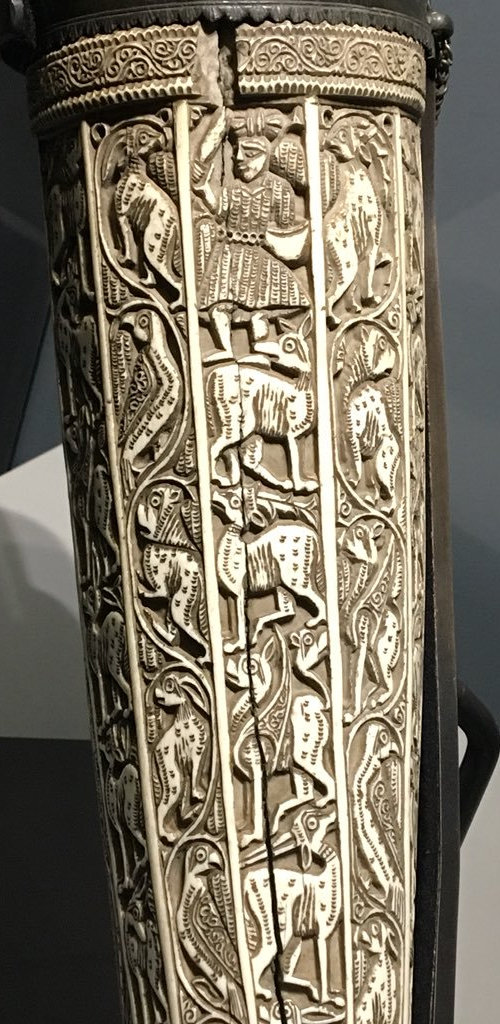Carved Ivory Horn or 'Oliphant' of St. Hubert
Dans le trésor, le magnifique olifant dit « huchet de saint Hubert », fin XIe-début XIIe s., probablement réalisé dans les ateliers arabes de la région d’Amalfi.
In the treasury, the magnificent olifant said "Oliphant of Saint Hubert", late 11th-early 12th century, probably made in the Arab workshops of the region of Amalfi.
Photos by Laurent Veyssière
Oliphant of St. Hubert (ivory), French School, (12th century) / Musee Crozatier, Le Puy-en-Velay, France
Length: 49 cms
Referenced on p.14 WAR - 010 - Saracen Faris 1050-1250 AD by David Nicolle and Christa Hook
Carved ivory horn or 'oliphant' from southern Italy.
It is in Fatimid style and was either made locally by Muslim craftsmen from Sicily or was imported from Egypt.
Note the turbaned, mail-clad warrior near the top, armed with a sword and shield.
Such huge and magnificent horns would have been prized possessions among the military elite.
(Musée Crozatier, Le Puy, France).
Referenced on p.108, God's Warriors, Knights Templar, Saracens and the Battle for Jerusalem by Helen Nicholson & David Nicolle:
Carved ivory horn or 'oliphant' from southern Italy.
It is in Fatimid style and was either made locally by Muslim craftsmen from Sicily or was imported from Egypt.
Note the turbaned, mail-clad warrior near the top of the horn, armed with a sword and shield.
Such huge and magnificent horns would have been prized possessions among the military elite.
Referenced as figure 601 in The military technology of classical Islam by D Nicolle
601. Ivory oliphant, late 11th century AD, Sicilian or south Italian, Musée Crozatier, Le Puy.

Previous: Four ivory panels with hunters and revellers, 11th-12th century, Staatliche Museen, Berlin
Next: A carved ivory horn or 'oliphant', South Italian, Metropolitan Museum of Art, New York
See also Muslim influenced Illustrations of Costume and Soldiers from Sicily and Southern Italy


